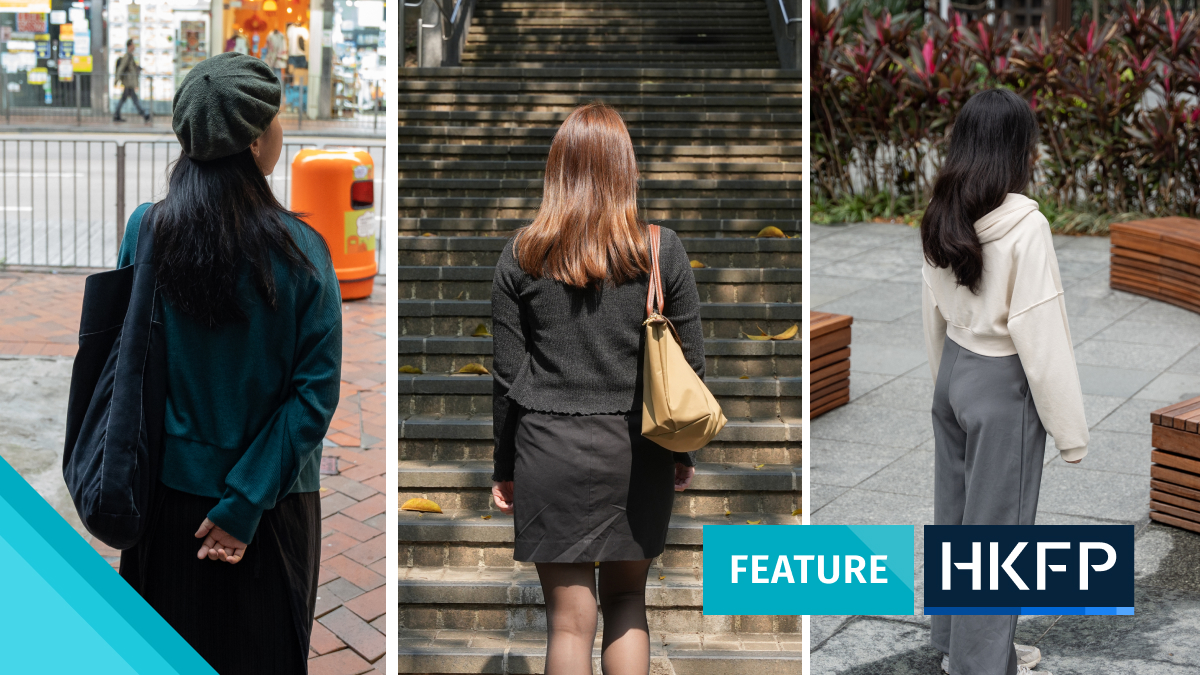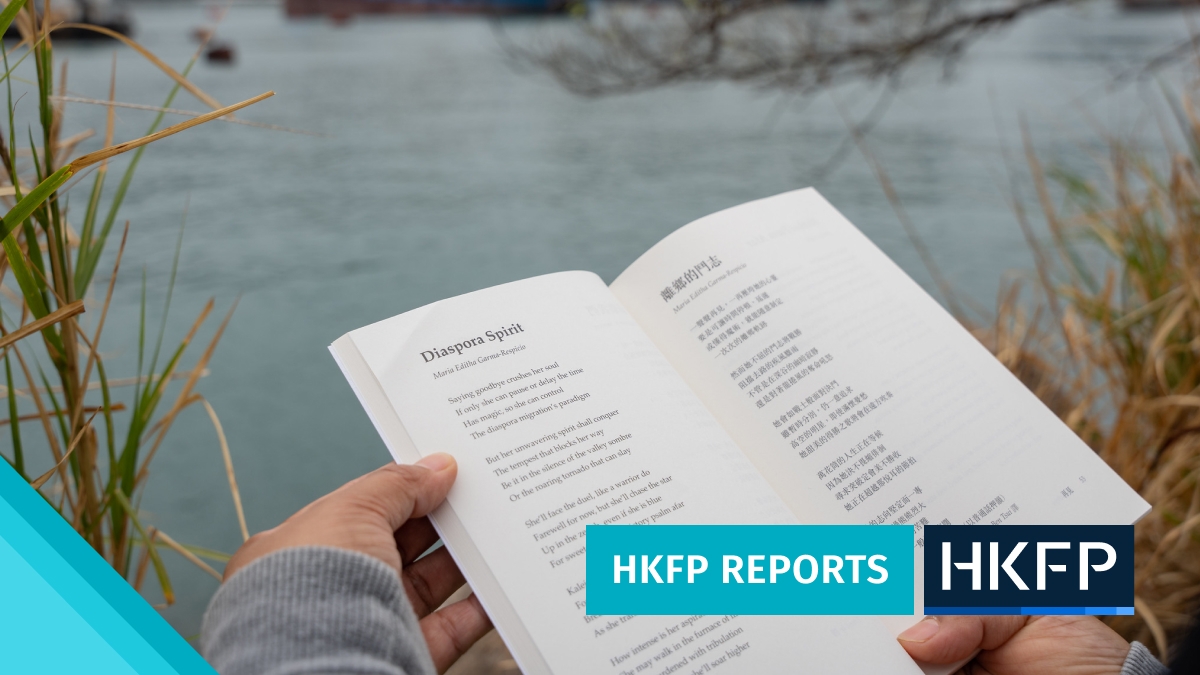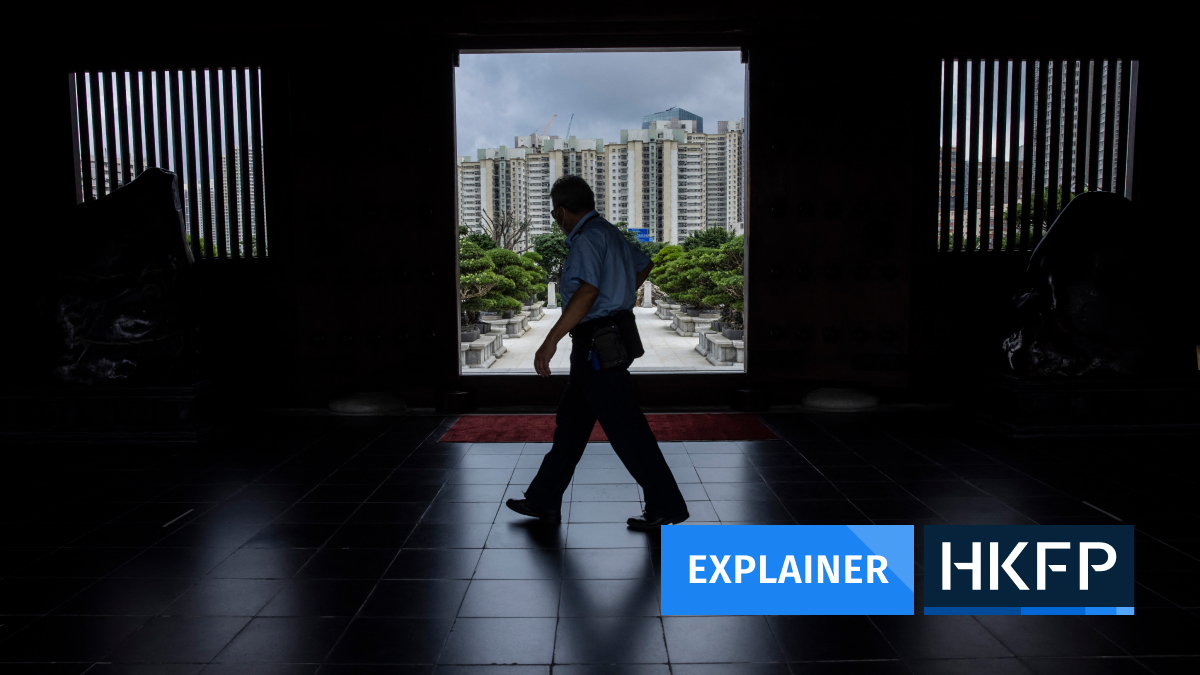Pitt Cheung was scrolling through Facebook one Friday evening when he saw a post by a local media outlet. “CCTV footage of the stabbing at Plaza Hollywood,” it read, referring to an incident at a Hong Kong shopping mall that had just taken place.

The 41-year-old hairdresser said he clicked onto the article link to learn more about the incident that was behind the numerous news notifications on his phone.
Immediately, a 50-second CCTV clip began playing, showing a man chasing two people with a knife. Before Cheung knew it, he had witnessed the pair being brutally attacked by a stranger, in a shopping mall just one subway stop from his home. Both were pronounced dead soon after.
“I am not normally afraid of gruesome stuff. But this was really horrifying,” Cheung said.
He added that, while there was a content warning, its text appeared as the footage began, not before it.
As the CCTV footage circulated, some local media outlets mistakenly reported that the victims were a male and a female. They also cited rumours that the female was the wife of the killer, whilst a foreign LGBT+ news website shared a tweet alleging it was a hate crime. Police confirmed in a press conference later that the victims were both female, and that the man did not appear to know them.

Days later, the alleged murder of three young children at a Sham Shui Po subdivided flat also made headlines. Local media outlets initially said their mother was Pakistani, adding that her husband was the suspected killer.
Later, it was the mother, an Indian national, who was arrested and charged on suspicion of murdering her children.
One news outlet published 10 stories on the night of the attack. Another made a dedicated page on the killings, complete with a timeline of the incident and the developments after.
Between the circulation of graphic content and inaccurate reporting, the two incidents – rare cases of violent crime in Hong Kong – have put a spotlight on how local media outlets report breaking news.
A changed media landscape
Globally, the digitalisation of the news industry has seen outlets exploit sensationalism and employ clickbait to drive traffic, which is often connected to advertising revenue. In Hong Kong, the race for eyeballs has been compounded by a large volume of newspapers and media companies in a city of 7.3 million people, as well as the changes to the media landscape in the wake of the national security law.
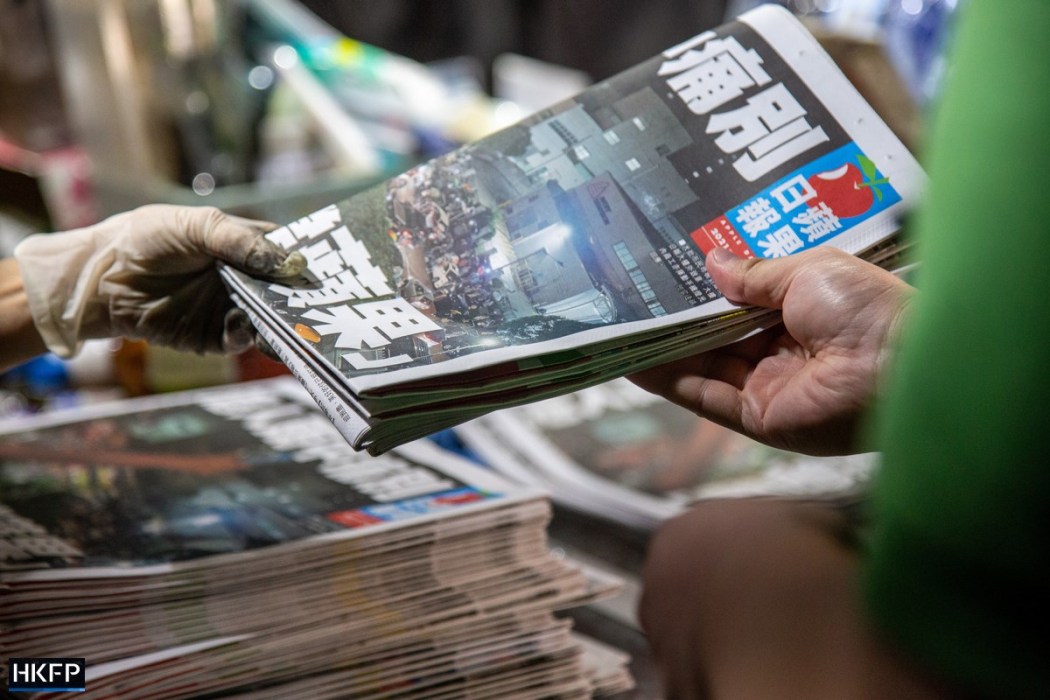
Since the legislation was imposed on the city in 2020 – criminalising secession, subversion, foreign collusion and terrorism – several pro-democracy news outlets including Apple Daily and Stand News have shut following the arrests of top editors and executives. Both outlets conducted hard-hitting investigations that unveiled scandals involving government officials and large business conglomerates, and were known for their coverage of political demonstrations.
Without politics or protests making headlines, Ronson Chan, the head of the Hong Kong Journalists Association (HKJA), said news outlets were more reliant on breaking news coverage to drive traffic.
“The focus now is on breaking news. When something happens, everyone wants to be first,” Chan told HKFP, adding that the rush to share gory images and information before sufficient verification was part of the competition.
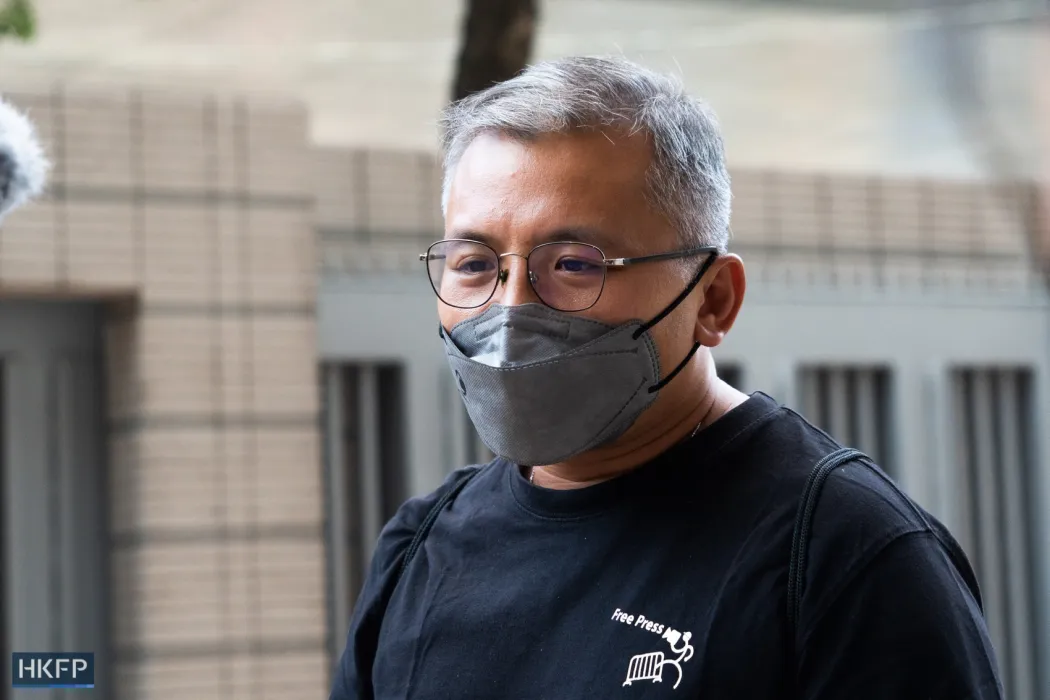
A media industry colloquialism suggests that “if it bleeds, it leads” – which is true of newspaper frontpages, as well as news site traffic trends. HKFP’s initial article remained the most popular story – attracting more clicks than all other articles put together – in the four days that followed the incident. The single write-up outperformed blanket coverage of the Tiananmen crackdown anniversary, receiving just over 50,000 “pageviews,” whilst the next most popular story received around 11,600 views.
Veteran journalist Allan Au said that there were “fewer and fewer topics” that could be explored openly, whether by media outlets or online.
“It’s rare for media to have a big news story that they can really discuss,” Au said. “So when there is, they use a lot of manpower, resources and speed to capture the audience’s attention.”
Au added that the mistakes made in the reporting of these two incidents could be related to a departure of experienced journalists from the industry locally.
According to a study by the Association of Overseas Hong Kong Media Professionals (AOHKMP) published in April, journalists “began to leave the city en masse in 2020, likely in the hundreds.”
“The loss of veteran reporters, the manpower shortage, the competition for click rates – all of these are reasons why verification efforts are lacking,” Au said. “This is my observation.”
Shortly after the Diamond Hill and Sham Shui Po tragedies, the HKJA issued guidelines to media outlets in response to their coverage.

“Media outlets should not share videos showing the process of death, and should be mindful of whether the use of violent or bloody videos can deepen the public’s understanding of the news event. [Media outlets] should refrain from casually publicising tragic pictures to attract readers,” the group wrote.
The HKJA also advised media outlets issue corrections that “clearly state the mistake, the content after the edit is made, and the time of the clarification.”
Au said most local media outlets did not have a practice of publishing corrections after making and amending an error. “Media outlets are not doing a good enough job when it comes to transparency,” he added.
The age of social media
While inaccurate information published by media outlets ultimately gets corrected, the use of graphic images can leave a lasting scar on readers. This is especially so in the age of social media, researchers say.
“Previously, you would have a news cycle, you might have some graphic images, and then the news cycle is done and then the story is kind of over with,” said Odile Thiang, a lead clinical advisor at mental health charity Mind HK.
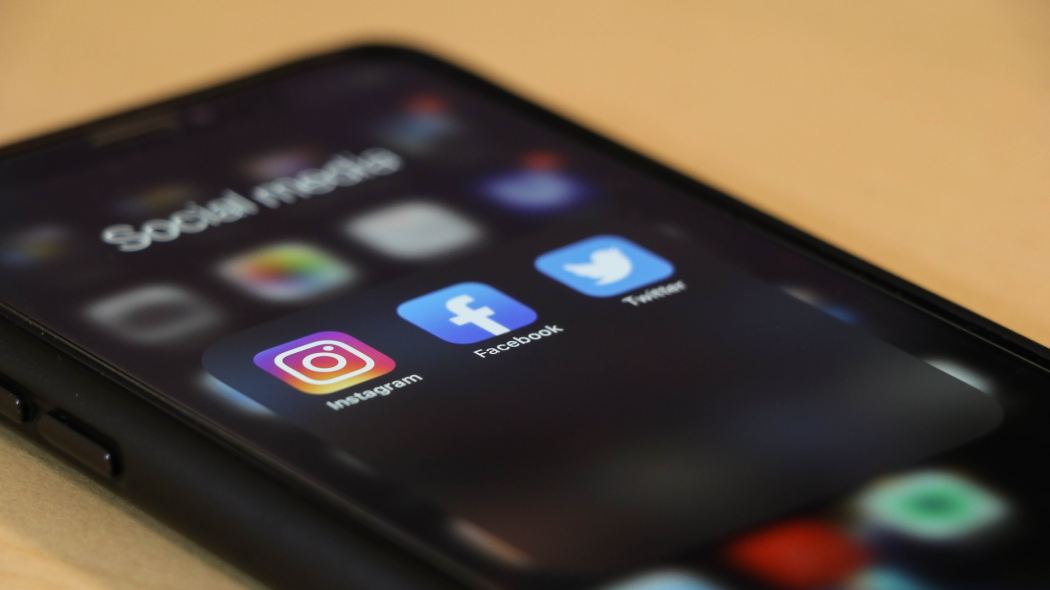
With content easily going viral and algorithms that amplify images, prolonged exposure to graphic visuals could heighten public anxiety and fear, Thiang said.
Emily Cheng, an assistant professor in the Chinese University of Hong Kong (CUHK)’s social work department, said the CCTV footage of the Diamond Hill stabbings was “vivid” and had a “detailed presentation” that could make people feel as if they were there.
“It was not necessary to show that video,” Cheng said. “There’s no benefit at all.”
According to a study published by Cheng and other researchers in 2014, Hong Kong outlets reported suicide-related events “more frequently and sensationally” than in Western countries. Hong Kong reporters cited satisfying commercial competitiveness, wanting to reflect societal problems beneath the tragedies, and responding to readers’ interests as among the reasons for reporting on such events.

Chinese media reporters said they considered the suicides of non-celebrities as newsworthy, differing from local English reporters, the study also found.
Grace Leung, a lecturer at the CUHK’s journalism school, also said the rise in news consumption through social media had caused outlets to sacrifice values in an attempt to chase views.
“Media outlets may not refrain from publishing bloody scenes because the images are already circulating on social media, so there’s no harm done if they share them, too,” Leung said.
“But a professional media organisation is not just a random person on the internet. They should hold themselves up to professional standards,” she added.
| 💡If you are in need of support, please call: The Samaritans 2896 0000 (24-hour, multilingual), Suicide Prevention Centre 2382 0000 or the government mental health hotline on 18111. The Hong Kong Society of Counselling and Psychology provides a WhatsApp hotline in English and Chinese: 6218 1084. See also: HKFP’s comprehensive guide to mental health services in Hong Kong. |
Support HKFP | Policies & Ethics | Error/typo? | Contact Us | Newsletter | Transparency & Annual Report | Apps
Help safeguard press freedom & keep HKFP free for all readers by supporting our team

Original reporting on HKFP is backed by our monthly contributors.
Almost 1,000 HKFP Patrons made this coverage possible. Each contributes an average of HK$200/month to support our award-winning original reporting, keeping the city’s only independent English-language outlet free-to-access for all. Three reasons to join us:
- 🔎 Transparent & efficient: As a non-profit, we are externally audited each year, publishing our income/outgoings annually, as the city’s most transparent news outlet.
- 🔒 Accurate & accountable: Our reporting is governed by a strict Ethics Code. We are 100% independent, and not answerable to any tycoon, mainland owners or shareholders. Check out our latest Annual Report, and help support press freedom.
- 💰 It’s fast, secure & easy: We accept most payment methods – cancel anytime, and receive a free tote bag and pen if you contribute HK$150/month or more.
MORE Original Reporting
HKFP has an impartial stance, transparent funding, and balanced coverage guided by an Ethics Code and Corrections Policy.
Support press freedom & help us surpass 1,000 monthly Patrons: 100% independent, governed by an ethics code & not-for-profit.




